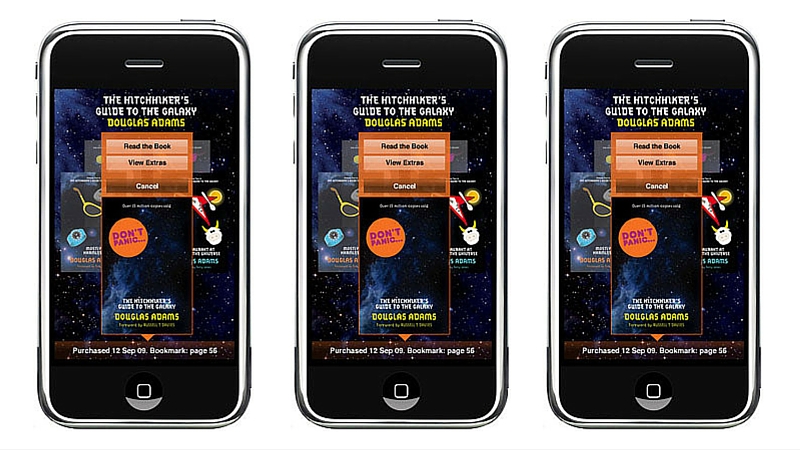The Rise of the Alternatives: A New Hope for Developers
The dominance of Google and Apple in the app distribution space has long been a point of contention for developers. High commission rates, opaque approval processes, and restrictive policies have led many to seek greener pastures. Enter the alternative app stores: a diverse ecosystem of platforms catering to different niches, devices, and philosophies.
Sarah Chen, a veteran app developer and founder of IndieAppLaunch, explains the appeal: “Alternative app stores offer developers a chance to break free from the one-size-fits-all approach of major platforms. Whether you’re looking for more flexible policies, lower fees, or access to specific markets, there’s likely an alternative store that fits your needs.”
![The Hitchhiking Developer's Guide to The Alternative App Galaxy setup] Hitchhikers guide to the galaxy- keeping it simple with one wall : r/iOSthemes](https://i.redd.it/6xloxxlutdi51.jpg)
Mapping the Alternative App Galaxy
The alternative app ecosystem is vast and varied. Here’s a tour of some of the most prominent celestial bodies in this expanding universe:
1. The F-Droid Nebula: Open Source Haven
F-Droid stands as a beacon for open-source enthusiasts. This store exclusively hosts free and open-source software (FOSS) for Android devices.
- No tracking or ads
- All apps must be open source
- Community-driven curation
John Smith, an open-source advocate, notes: “F-Droid is more than just an app store; it’s a philosophy. It’s about transparency, user freedom, and community-driven development.”
2. The Amazon Appstore Asteroid Belt: A Familiar Face in a Strange Land
Amazon’s offering might be the most recognizable name in the alternative app space, leveraging the e-commerce giant’s vast user base.
Key Features:
- Integration with Amazon’s ecosystem (Fire devices, Alexa)
- “Actually Free” program for premium apps
- Potential for inclusion in Amazon’s “Free App of the Day” promotion
3. The Huawei AppGallery Galaxy: Eastern Star Rising
With Google services unavailable on Huawei devices, the AppGallery has become a crucial platform for reaching users in China and beyond.
Key Features:
- Massive user base in China
- Growing international presence
- Huawei Mobile Services (HMS) as an alternative to Google Mobile Services
Dr. Li Wei, a mobile market analyst, comments: “The AppGallery isn’t just an alternative; for many users, especially in China, it’s the primary app store. Its importance in the global app ecosystem can’t be overstated.”
4. The Samsung Galaxy Store: A Universe Within a Universe
Samsung’s proprietary app store comes pre-installed on Galaxy devices, offering a direct line to millions of Samsung users.
Key Features:
- Exclusive apps and features for Samsung devices
- Integration with Samsung’s ecosystem
- Potential for featured placement and promotions
5. The APKPure Comet: The Wild West of Apps
APKPure offers a vast library of apps, including those not available in certain regions on official stores.
Key Features:
- Wide variety of apps, including region-restricted ones
- Easy APK downloads for sideloading
- No developer account required for submission
Note: While platforms like APKPure offer opportunities, they also come with increased security risks for users and potential legal gray areas for developers.
Navigating the Alternative Spaceways: Tips for Developers
Venturing into the alternative app galaxy requires a different set of skills and strategies compared to mainstream app stores. Here are some tips for developers looking to explore these new frontiers:
1. Diversify Your Distribution
Emily Rodriguez, CEO of AppDiversify, advises: “Don’t put all your eggs in one basket. Each alternative store has its strengths and user base. Experiment with multiple platforms to maximize your reach.”
2. Tailor Your Approach
Each alternative store has its own culture and requirements. Customize your app’s description, screenshots, and even features to align with each platform’s unique audience.
3. Leverage Platform-Specific Features
Take advantage of unique features offered by each store. For example, optimize for Huawei Mobile Services when publishing on the AppGallery.
4. Mind the Legal Asteroids
Navigate the complex legal landscape carefully. Ensure your app complies with the regulations of each store and the regions they serve.
5. Build Community Connections
Many alternative stores have strong community elements. Engage with users, respond to feedback, and become an active member of these ecosystems.
Opportunities and Challenges
While alternative app stores offer exciting opportunities, they also come with their own set of challenges:
Opportunities:
- Lower commission rates (some stores take as little as 5% compared to the standard 30%)
- Access to niche markets and user bases
- More flexible content policies
- Potential for featured placement and promotions
- Reduced competition compared to mainstream stores
Challenges:
- Smaller user bases (in most cases) compared to Google Play and App Store
- Potential security risks and increased piracy
- Fragmented development process to cater to different store requirements
- Less streamlined monetization options
- Varying levels of user trust and willingness to install from alternative sources
Expanding Universes of Apps
The alternative app ecosystem is not just a static entity but a rapidly evolving space. Several factors are shaping its future:
1. Regulatory Pressures
Increasing scrutiny of tech giants’ app store practices could lead to more openness and opportunities for alternative platforms.
2. Emerging Technologies
The rise of AR, VR, and IoT devices is creating new niches for specialized app stores.
3. Blockchain and Decentralization
Decentralized app stores built on blockchain technology promise a new level of transparency and user control.
Dr. Aisha Patel, a technology futurist, predicts: “The next decade will see a significant shift in how apps are distributed. Decentralized and specialized app stores will play a much larger role, challenging the duopoly we see today.
Case Studies: Success Stories from the Outer Rim
1. PrivacyGuard: F-Droid’s Open Source Star
A privacy-focused VPN app that found its niche on F-Droid, gaining over 500,000 users who value open-source solutions.
2. EastMeetWest: Breaking Into China via AppGallery
A language learning app that tapped into the massive Chinese market through Huawei’s AppGallery, achieving over 2 million downloads in its first year.
3. GalaxyFit: Leveraging Samsung’s Ecosystem
A fitness app that integrated deeply with Samsung Health, becoming a top performer on the Galaxy Store and later expanding to other platforms.
The Hitchhiker’s Toolkit
As we’ve explored the vast and varied landscape of the alternative app galaxy, it’s clear that opportunities abound for developers willing to venture off the beaten path. Success in this new frontier requires adaptability, creativity, and a willingness to embrace the unique aspects of each platform.
Here’s a final checklist for developers ready to embark on their alternative app store journey:
- Research thoroughly: Understand the nuances of each platform
- Adapt strategically: Tailor your app and marketing for each store
- Engage actively: Build relationships within these new communities
- Stay informed: Keep up with the rapidly evolving alternative app ecosystem
- Be patient: Building a presence in these new markets takes time
The alternative app galaxy is not just a backup plan for developers; it’s a vibrant, growing ecosystem that offers unique opportunities for innovation and growth. As the digital landscape continues to evolve, those who have established a presence in these alternative spaces may find themselves ahead of the curve.
In the words of Sarah Chen: “The alternative app galaxy isn’t just about finding new places to list your app. It’s about discovering new ways to connect with users, innovate, and grow as a developer. It’s a journey that can transform not just your app, but your entire approach to development.
So, grab your towel, don’t panic, and get ready to explore the exciting frontiers of the alternative app galaxy. The next big opportunity might just be waiting in an app store you haven’t discovered yet.
















Add Comment